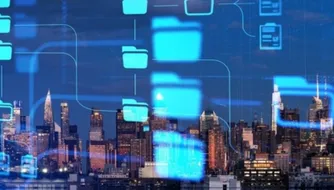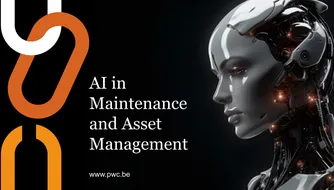Mastering the control tower journey
Which are the 10 common pitfalls and how to overcome them

In an era where supply chains are becoming increasingly complex, dynamic, and interconnected, the significance of a control tower has risen as a pivotal element in orchestrating the intricate flows of data and products. A control tower represents the nerve centre of a modern supply chain, providing real-time visibility, data-driven insights, and collaborative capabilities. However, while the concept promises many operational and financial benefits, many organisations stumble along the path towards successful implementation. In this article, you’ll learn more about the main pitfalls of a set-up and we’ll provide you with insights on how to overcome them.
Pitfall 1 Lack of alignment between the control tower vision and the overall business strategy
Aligning the control tower's objectives with the broader business strategy is critical. Companies must clearly define its role in achieving strategic goals, such as improving customer service, reducing costs, or increasing agility/resilience.
This alignment ensures that the control tower has a direct impact on the organisation's success and drives differentiation.
Pitfall 2 No overarching digital strategy in place so digital transformation only initiated at the functional level
Control tower should be part of an end-to-end digital roadmap. It can seamlessly integrate with existing digital initiatives and facilitate a cohesive digital transformation across the organisation.
This approach ensures that it becomes a central component of the digital ecosystem, providing real-time visibility, data-driven insights, and collaborative capabilities, while driving overall supply chain efficiency and performance.
Pitfall 3 Missing the big picture by not considering supply chain as an ecosystem, thus limiting value creation
Conduct a thorough assessment of your current supply chain operations, capabilities, and pain points. Additionally, employ stakeholder mapping techniques to identify all relevant parties (external and internal) and understand their impact on the supply chain performance. Develop end-to-end use cases to identify potential bottlenecks, uncover optimisation opportunities, and highlight critical areas within the supply chain.
Conducting comprehensive assessments of current operations and pain points provide a data-driven foundation for improvement. Stakeholder mapping ensures that the interconnected roles and impact of all relevant parties are understood, promoting collaboration. Developing end-to-end use cases uncover inefficiencies and bottlenecks, directing efforts toward areas with the most significant impact on value creation. Collectively, these elements create a holistic view of the supply chain, optimising it as an interconnected ecosystem and leads to enhanced efficiency, competitiveness, and value generation.
Pitfall 4 Assuming that a control tower is ‘just’ about technology leading to non-actionable insights
In designing, it’s vital to consider not only the technological aspect but also the overall operating model. This entails strategic evaluations, such as determining the optimal control tower archetype – whether it's an in-house, hybrid, or outsourced setup.
This decision significantly influences the organisational structure (governance, roles & responsibilities, skill sets, etc.), processes and workflows, and ultimately shapes it's effectiveness.
Pitfall 5 Building a control tower without proper integration within the organisation, making it hard to solve problems and implement solutions effectively
During the design phase, prioritise an impact assessment to evaluate how the control tower could impact diverse organisational aspects, while also identifying and understanding the interdependencies between supply chain processes and functions. Facilitate cross-functional collaboration and communication within the structure. Create a well-defined rulebook outlining protocols for issue resolution and establish clear escalation pathways.
This approach empowers the control tower to promptly address challenges, harness collective insights, and effectively drive solutions while remaining closely aligned with the wider organisational framework.
Pitfall 6 Opt for the least expensive control tower solution that’s not fit-for-purpose or isn’t future-proof
Instead of focusing solely on cost, prioritise selecting a control tower solution that aligns with your strategic roadmap and can seamlessly encompass additional supply chain functions or diverse product categories. In doing so, consider the capabilities that can actively enable the strategy you have in place.
This approach ensures that the chosen solution not only meets immediate needs but also supports future growth and scalability.
Pitfall 7 Insufficient time spent on testing and refining control tower solution thus creating design flaws
Ensure rapid prototyping and a well-structured pilot phase. Develop a pilot launch plan (goals, scope & timeline) and facilitate organised feedback sessions to capture users’ insights. Strengthen pilot components to handle higher data volumes and complex scenarios, while optimising response speeds for full-scale deployment.
With the lessons learned from the pilot, proceed to complete design of components and implement broader system and tool changes.
Pitfall 8 Attempting to encompass extensive data despite poor data quality, resulting in insights that are unusable
Assess the company's existing data and the high-leverage use cases envisioned for the control tower. Identify areas of alignment between available data and the control tower's requirements. Focus on cleaning and enhancing data relevant to the initial use cases rather than attempting to address all data quality issues simultaneously. Moreover, consider the potential of external data sources (such as suppliers, carriers, customers, and IoT) to bridge any gaps in the dataset, thereby enhancing the overall data quality and enriching the control tower's insights.
By aligning existing data sources with control tower requirements, organisations can transform their available data into a valuable asset, enabling the control tower to deliver actionable insights and drive informed decision-making.
Pitfall 9 Failure to account for local specificities diminishes the control tower's efficiency on a global scale
Examine the local situation– taking into account factors like language, regional processes/policies and specific regulations. Assess local processes and policies, ensuring that any deviations from best practices are justified by compliance or operational limitations. In this assessment, it is crucial to include individuals with in-depth knowledge of local regulations, culture, and language.
By thoroughly examining local conditions, involving experts with knowledge of regulations, culture, and language, and seamlessly integrating local nuances, organisations can enhance the control tower's efficiency on a global scale, ensuring alignment with specific regional requirements and optimising its performance.
Pitfall 10 Considering the control tower set-up as a one-off exercise rather than an ongoing journey
To address this challenge, organisations should establish a structured framework for continuous improvement as an integral part of their control tower journey. This framework should be designed to evolve the setup from its initial "basic" visibility use cases to more advanced analytics, insights and automation. Make continuous improvement an integral part of the control tower's culture by encouraging teams to regularly assess processes, identify areas for enhancement, and implement improvements. Involve cross-functional teams in this process to enable diverse perspectives and ensure alignment with the broader organisational goals. Approach the implementation iteratively by starting with basic visibility use cases and progressively add more advanced analytics and insights as the organisation matures in its control tower journey.
This helps to avert suboptimal continuous improvement practices and offers the potential to expand the control tower's capabilities (from visibility to insights & automation) and embrace new use cases.
Conclusion
In conclusion, a control tower is undeniably a game-changer in today's complex supply chain landscape, offering real-time visibility, data-driven insights, and collaborative capabilities. However, the journey to a successful implementation can be riddled with challenges. This article has explored the main pitfalls and shared insights on how to overcome them. Nevertheless, these pitfalls can be avoided by securing the appropriate resources and expert guidance. Based on our experience in control tower design and implementation, we have developed a holistic approach with methodologies and tools to support organisations in their control tower journey. These resources reduce inefficiencies associated with a trial-and-error approach and facilitate a rapid supply chain transformation, amplifying efficiency gains, agility, and resilience.
Are you considering embarking on your control tower journey, or have you already begun but are encountering challenges in realising the benefits? We're here to assist – let's have a conversation.


